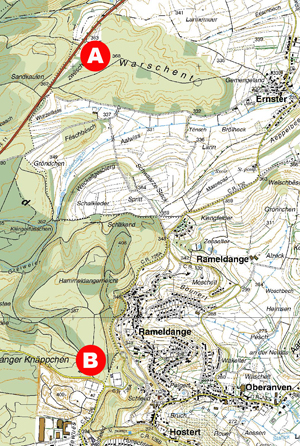
A — The archaeological site “In den Waelen”.
B — The archaeological site “Staekaul”
The region around Niederanven was situated not far from a very busy road and inhabited since prehistoric times. Many archaeological discoveries proof this fact. The bones, jewellery or other daily tools found in this region are of the most important national discoveries of the stone age.
The most impressive discovery had been found near the border to Junglinster in the Grünewald at a site called “An de Waelen”. There were tools, weapons and objects of art (from Early- , Middle and Late-Stone Age).
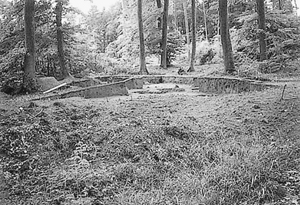
A tumulus cleared in the forest on the site “Staekaul”
In 1990 it has been confirmed that on this site in the Grünewald and on the area between “Staekaul” and the route d’Echternach, numerous gravesites from prehistoric times can be found. This suspicion had been proved during the storm loss clean up works.
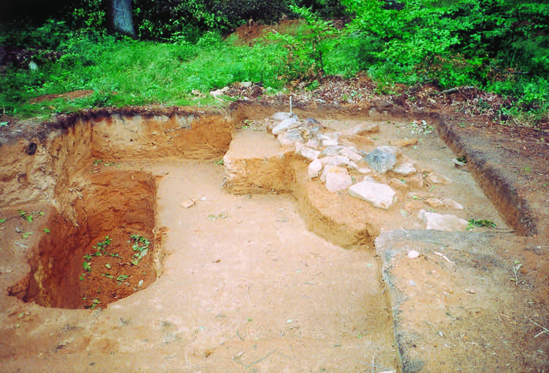
The archeological site “Staekaul”
Here they found so-called “Tumuli” tombs, circular mounds on an elevated site, where the dead had been buried without prior incineration. This sort of sepulchre corresponds to the time of the “La Tène Culture” (between 500 and 400 a.Chr.) equal to the Iron Age. The tools and objects like ceramic bowls richly decorated, bronze rings, amber jewellery and a olden brooch that were found around these gravesites are dating from the same time.
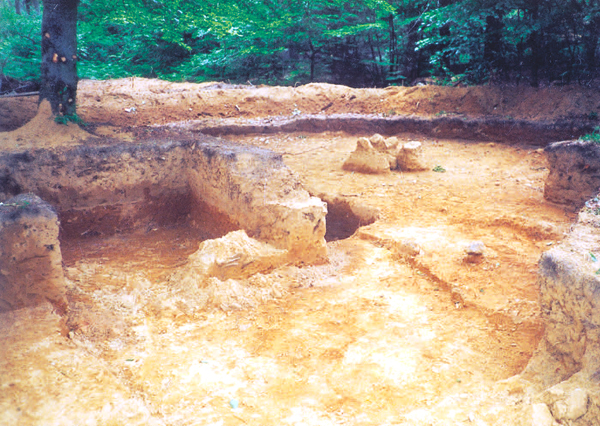
The various layers were minutely cleared one after the other.
As the Celts believed in soul-migration, they always buried their dead with their daily tools in reach, in order to guarantee them welfare in the hereafter. The high presence of so many gravesites indicates a near settlement, probably the origins of the later village Andethanna.
Burial objects
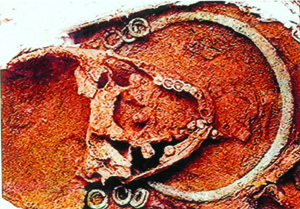 In the tomb of a man they added his swords lance and buckler and woman was buried together with her rings, pearls and brooches (as shows the picture).
In the tomb of a man they added his swords lance and buckler and woman was buried together with her rings, pearls and brooches (as shows the picture).
